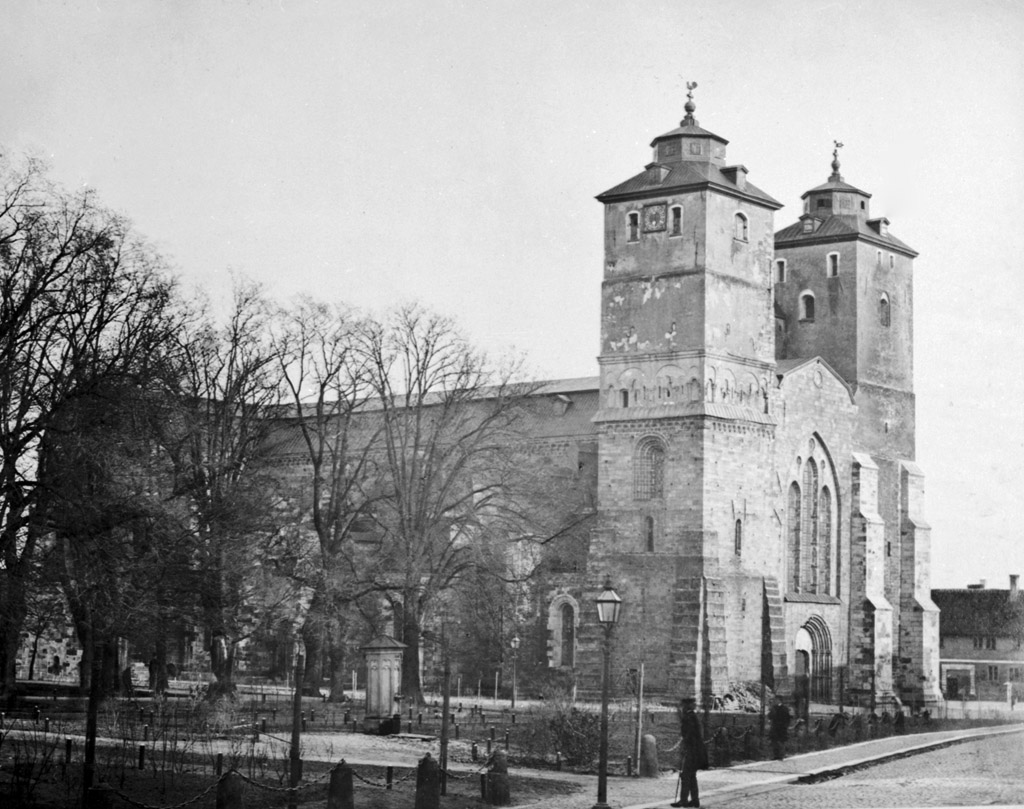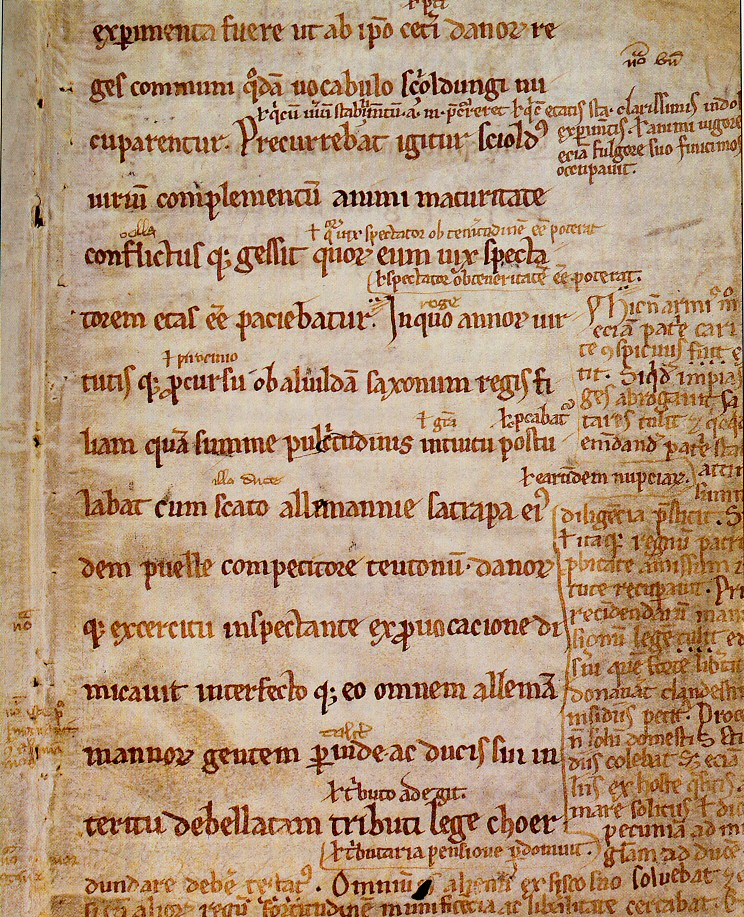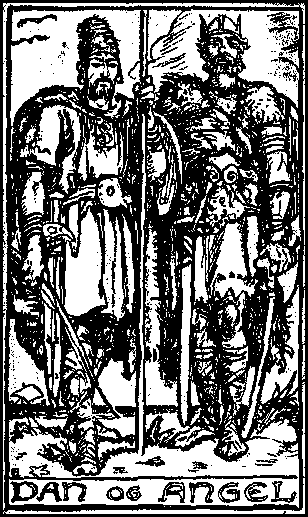|
Ryd Abbey
Ryd Abbey or RΟΦde Abbey ( da, Ryd Kloster; german: RΟΦdekloster; la, Rus regis) was a Cistercian monastery in Munkbrarup that formerly occupied the present site of GlΟΦcksburg Castle in GlΟΦcksburg on the Flensburg Fjord in the Schleswig-Flensburg district of Schleswig-Holstein, Germany. History Ryd Abbey was settled by the Cistercians of Esrum Abbey in 1210. The monastic community originated however in St. Michael's Abbey in Schleswig, a Benedictine double monastery which had become disorderly, with a reputation for immorality and drunkenness. In 1192 Nicholas I, the de facto officiating Bishop of Schleswig, therefore moved the monks to a remote site, where they established Guldholm Abbey. This was not a success, and the monks were moved again to the site at Munkbrarup. This coincided with the arrival in Denmark of the then new and severe Cistercian order, to whom the bishop entrusted the new foundation, with a substantial endowment. The monastery was thus at last placed o ... [...More Info...] [...Related Items...] OR: [Wikipedia] [Google] [Baidu] |
Cistercian
The Cistercians, () officially the Order of Cistercians ( la, (Sacer) Ordo Cisterciensis, abbreviated as OCist or SOCist), are a Catholic religious order of monks and nuns that branched off from the Benedictines and follow the Rule of Saint Benedict, as well as the contributions of the highly-influential Saint Bernard of Clairvaux, known as the Latin Rule. They are also known as Bernardines, after Saint Bernard himself, or as White Monks, in reference to the colour of the "cuculla" or cowl (choir robe) worn by the Cistercians over their habits, as opposed to the black cowl worn by Benedictines. The term ''Cistercian'' derives from ''Cistercium,'' the Latin name for the locale of CΟ°teaux, near Dijon in eastern France. It was here that a group of Benedictine monks from the monastery of Molesme founded CΟ°teaux Abbey in 1098, with the goal of following more closely the Rule of Saint Benedict. The best known of them were Robert of Molesme, Alberic of CΟ°teaux and the Engl ... [...More Info...] [...Related Items...] OR: [Wikipedia] [Google] [Baidu] |
Archbishop Of Lund
List of (arch)bishops of Lund. Until the Danish Reformation the centre of a great Latin (arch)bishopric, Lund has been in Sweden since the Treaty of Roskilde in 1658. The Diocese of Lund is now one of thirteen in the Church of Sweden. Catholic Episcopate ''(all Roman Rite; some dates disputed according to the source) ;''Suffragan Bishops of Lund'' * Henrik (1060βÄ™1065? or 1048? βÄ™ death 1060.08.21) * Egino (1065? βÄ™ death 1072.10.19); ?former bishop of Dalby * Ricwald (1072?1075 βÄ™ death 1089.05.26) * Ascer (1089βÄ™1103 ''see below'') ;''Metropolitan Archbishops of Lund'' * Ascer (''see above'' 1103 βÄ™ death 1137.05.05) * Eskil (1138?1137βÄ™1177?1179) * Absalon Hvide (1177?1179 βÄ™ death 1201.03.21) * Andreas Sunesen (1201βÄ™1222?1223) * Peder Saxesen (1224.01.11 βÄ™ death 1228.07.11) * Uffe Thrugotsen (1228?1230 βÄ™ death 1252.12.15) * Jakob Erlandsen (1253.08.13 βÄ™ death 1274.02.18) * Trugot Torstensen (1276?1277.01.13 βÄ™ death 1280.05.02) * Jens Dros (128 ... [...More Info...] [...Related Items...] OR: [Wikipedia] [Google] [Baidu] |
1210s Establishments In The Holy Roman Empire
1 (one, unit, unity) is a number representing a single or the only entity. 1 is also a numerical digit and represents a single unit of counting or measurement. For example, a line segment of ''unit length'' is a line segment of length 1. In conventions of sign where zero is considered neither positive nor negative, 1 is the first and smallest positive integer. It is also sometimes considered the first of the infinite sequence of natural numbers, followed by 2, although by other definitions 1 is the second natural number, following 0. The fundamental mathematical property of 1 is to be a multiplicative identity, meaning that any number multiplied by 1 equals the same number. Most if not all properties of 1 can be deduced from this. In advanced mathematics, a multiplicative identity is often denoted 1, even if it is not a number. 1 is by convention not considered a prime number; this was not universally accepted until the mid-20th century. Additionally, 1 is the ... [...More Info...] [...Related Items...] OR: [Wikipedia] [Google] [Baidu] |
GlΟΦcksburg Castle
GlΟΦcksburg Castle ( German: Schloss GlΟΦcksburg, Danish: ''Lyksborg Slot'') is one of the most significant Renaissance castles in Northern Europe. The castle was the headquarters of the ducal lines of the house of GlΟΦcksburg and temporarily served as the primary residence of the Danish monarch. The building is in the town of GlΟΦcksburg, located in Northern Germany on the Flensburg Firth. The structure is a water castle. The ducal house of GlΟΦcksburg derived its name from the castle and its family members are related to almost all European dynasties. Nowadays, the castle is one of the most famous sights in the German state of Schleswig Holstein. Within the castle is a museum which is open to the public. GlΟΦcksburg Castle History From the Ryd Abbey to GlΟΦcksburg Castle The history of today's castle grounds began in Schleswig in 1192, when the double monastery of St. Michael auf dem Berge was dissolved. The nuns then moved to the St. John's Monastery in Schleswig, w ... [...More Info...] [...Related Items...] OR: [Wikipedia] [Google] [Baidu] |
John II, Duke Of Schleswig-Holstein-Sonderburg
John the Younger or John of Denmark ( da, Hans; german: Johann; 25 March 1545 βÄ™ 9 October 1622) was the Duke of Schleswig-Holstein-Sonderburg. Biography John was born on 25 March 1545 in Haderslev in the Duchy of Schleswig as the fourth child and third son of King Christian III of Denmark and Norway and his wife, Dorothea of Saxe-Lauenburg. When Christian III died in 1559, he left three sons. Where the eldest, Frederick II, had long ago been appointed successor to the thrones of Denmark and Norway, all three brothers were in principle equally entitled to the father's share of the duchies of Schleswig and Holstein. To avoid unfortunate divisions of the royal part of the duchies, attempts were made to find suitable positions for the younger brothers elsewhere. The middle brother, Magnus, consequently, gave up his right of inheritance when Frederick II had him placed as prince-bishop of Ο•sel-Wiek in Livonia. However, the plan to secure John the post of the prince-archbis ... [...More Info...] [...Related Items...] OR: [Wikipedia] [Google] [Baidu] |
Gesta Danorum
''Gesta Danorum'' ("Deeds of the Danes") is a patriotic work of Danish history, by the 12th-century author Saxo Grammaticus ("Saxo the Literate", literally "the Grammarian"). It is the most ambitious literary undertaking of medieval Denmark and is an essential source for the nation's early history. It is also one of the oldest known written documents about the history of Estonia and Latvia. Consisting of sixteen books written in Latin on the invitation of Archbishop Absalon, ''Gesta Danorum'' describes Danish history and to some degree Scandinavian history in general, from prehistory to the late 12th century. In addition, ''Gesta Danorum'' offers singular reflections on European affairs in the High Middle Ages from a unique Scandinavian perspective, supplementing what has been handed down by historians from Western and Southern Europe. Books The sixteen books, in prose with an occasional excursion into poetry, can be categorized into two parts: Books 1βÄ™9, which deal with ... [...More Info...] [...Related Items...] OR: [Wikipedia] [Google] [Baidu] |
Saxo Grammaticus
Saxo Grammaticus (c. 1150 βÄ™ c. 1220), also known as Saxo cognomine Longus, was a Danish historian, theologian and author. He is thought to have been a clerk or secretary to Absalon, Archbishop of Lund, the main advisor to Valdemar I of Denmark. He is the author of the '' Gesta Danorum'', the first full history of Denmark, from which the legend of Amleth would come to inspire the story of ''Hamlet'' by Shakespeare. Life The '' Jutland Chronicle'' gives evidence that Saxo was born in Zealand. It is unlikely he was born before 1150 and it is supposed that his death could have occurred around 1220. His name Saxo was a common name in medieval Denmark. The name ''Grammaticus'' ("the learned") was first given to him in the ''Jutland Chronicle'' and the ''SjΟΠlland Chronicle'' makes reference to Saxo ''cognomine Longus'' ("with the byname 'the tall'"). He lived in a period of warfare and Danish expansion, led by Archbishop Absalon and the Valdemars. The Danes were also being thr ... [...More Info...] [...Related Items...] OR: [Wikipedia] [Google] [Baidu] |
Jutland
Jutland ( da, Jylland ; german: JΟΦtland ; ang, Ρ£ota land ), known anciently as the Cimbric or Cimbrian Peninsula ( la, Cimbricus Chersonesus; da, den Kimbriske HalvΟΗ, links=no or ; german: Kimbrische Halbinsel, links=no), is a peninsula of Northern Europe that forms the continental portion of Denmark and part of northern Germany. The names are derived from the Jutes and the Cimbri, respectively. As with the rest of Denmark, Jutland's terrain is flat, with a slightly elevated ridge down the central parts and relatively hilly terrains in the east. West Jutland is characterised by open lands, heaths, plains, and peat bogs, while East Jutland is more fertile with lakes and lush forests. Southwest Jutland is characterised by the Wadden Sea, a large unique international coastal region stretching through Denmark, Germany, and the Netherlands. Geography Jutland is a peninsula bounded by the North Sea to the west, the Skagerrak to the north, the Kattegat and Baltic Sea to the ... [...More Info...] [...Related Items...] OR: [Wikipedia] [Google] [Baidu] |
Eric VI Of Denmark
Eric VI Menved (1274 βÄ™ 13 November 1319) was King of Denmark (1286βÄ™1319). A son of King Eric V and Agnes of Brandenburg, he became king in 1286 at age 12, when his father was murdered on 22 November by unknown assailants. On account of his age, his mother ruled for him until 1294. Regency Eric Menved's rule was a central period during the βÄ€Age of Decay" in Denmark 1241βÄ™1340. His early reign βÄ™ during which he was led by his mother and her German relatives βÄ™ was affected by the unrest and wars that followed the murder of his father. The first act of the new government was to settle the case of the former king's murder at a court convened at Nyborg at Whitsun 1287. 27 honorable men were appointed to decide the case. Chief among the accused were Marshal Stig Andersen Hvide and Jacob Nielsen, Count of Halland and seven others were accused. After a one-day trial, the jury found all the accused guilty. The properties and incomes of the condemned were declared forfeit a ... [...More Info...] [...Related Items...] OR: [Wikipedia] [Google] [Baidu] |
Dan (king)
Dan (or Halfdan) is the name of one or more legendary earliest kings of the Danes and Denmark, mentioned in medieval Scandinavian texts. The ''Lejre Chronicle'' The ''Chronicle of Lejre'' ('' Chronicon Lethrense'') written about 1170 introduces a primeval King Ypper of Uppsala whose three sons were Dan, who afterwards ruled Denmark, Nori, who afterwards ruled Norway, and Ο‰sten, who afterwards ruled the Swedes. Dan apparently first ruled in Zealand for the Chronicle states that it was when Dan had saved his people from an attack by the Emperor Augustus that the Jutes and the men of Fyn and Scania also accepted him as king, whence the resultant expanded country of Denmark was named after him. Dan's wife was named Dana and his son was named Ro. The ''RΟ≠gsthula'' The Eddic poem ''RΟ≠gsthula'', tells how the god RΟ≠g (said to be Heimdall), fathered a mortal son named Jarl. Jarl had twelve sons with Erna Herse's daughter, the youngest of which bore the name Kon the Young (Old Nor ... [...More Info...] [...Related Items...] OR: [Wikipedia] [Google] [Baidu] |
Ο‰m Abbey
Ο‰m Abbey (''Ο‰m Kloster'') was a Cistercian monastery founded in 1172 in the Diocese of Aarhus near the town of Rye, between the lakes of MossΟΗ and GudensΟΗ in central Jutland, Denmark. It is one of many former monasteries and abbeys in the highland region of SΟΗhΟΗjlandet. History The Ο‰m Abbey Chronicle (''Ο‰m Klosters krΟΗnike'') was written by local monks from 1206 to 1267 when it abruptly ends. It outlines events at the abbey during the tumultuous years of the early 13th century. According to the Ο‰m Abbey Chronicle, Ο‰m Abbey was founded in 1172 by Cistercian monks from VitskΟΗl Abbey in northern Jutland. They wanted to found a daughter house in central Jutland. They attempted to establish such a house at Sabro near Aarhus but found the soil useless for farming. They moved to the area of the Sming forest near Silkeborg but found the same poor soil conditions. In 1166 they settled a short time at abandoned Veng Abbey, outside Skanderborg. They left in 1167 becau ... [...More Info...] [...Related Items...] OR: [Wikipedia] [Google] [Baidu] |






